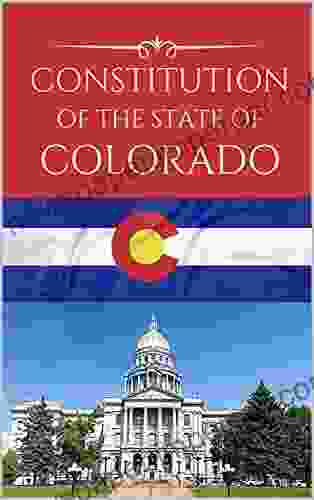How to Become a First-Generation Farmer: A Comprehensive Guide

4.5 out of 5
| Language | : | English |
| File size | : | 70936 KB |
| Text-to-Speech | : | Enabled |
| Screen Reader | : | Supported |
| Enhanced typesetting | : | Enabled |
| Print length | : | 577 pages |
Are you looking to start a farm but don't know where to begin? As a first-generation farmer, you can turn your dream of owning and operating a farm into a reality with the right knowledge and resources. This comprehensive guide will provide you with everything you need to know to get started, from choosing the right land to marketing your products.
Step 1: Choose the Right Land
The first step to becoming a first-generation farmer is to choose the right land. There are a few things to consider when choosing land, including:
- Location: The location of your land will determine the types of crops you can grow and the markets you can reach. Consider factors such as climate, soil conditions, and proximity to transportation routes.
- Size: The size of your land will depend on the type of farming you plan to do. If you're planning to raise livestock, you'll need more land than if you're growing crops.
- Price: Land prices vary depending on location and size. Be sure to factor the cost of land into your budget.
Step 2: Develop a Business Plan
Once you've chosen the right land, you need to develop a business plan. Your business plan should outline your goals, strategies, and financial projections. It will also help you to secure funding from investors or lenders.
Your business plan should include the following sections:
- Executive summary: This section should provide a brief overview of your business, including your mission statement, goals, and target market.
- Products and services: This section should describe the products or services you will offer, as well as your pricing strategy.
- Marketing plan: This section should outline your strategies for reaching your target market and promoting your products or services.
- Operations plan: This section should describe how you will operate your farm, including your production methods and staffing needs.
- Financial plan: This section should include your financial projections, including your startup costs, operating expenses, and revenue projections.
Step 3: Secure Funding
Once you have a business plan, you need to secure funding to start your farm. There are a number of different ways to finance a farm, including:
- Loans: You can get loans from banks, government agencies, and private lenders. Loans are typically repaid over a period of years, with interest.
- Grants: Grants are free money that you don't have to repay. There are a number of government and private grant programs available to farmers.
- Investors: You can also get funding from investors. Investors provide money in exchange for a share of your business.
Step 4: Start Farming
Once you have secured funding, you can start farming. The first few years of farming are typically the most challenging, but with hard work and dedication, you can build a successful farm.
Here are a few tips for starting out:
- Start small: Don't try to do too much too soon. Start with a small operation that you can manage yourself. You can gradually expand your operation as you gain experience.
- Learn from others: There are a lot of resources available to help first-generation farmers. Attend workshops, read books, and talk to other farmers. You can also get involved with organizations like the National Young Farmers Coalition.
- Be prepared to work hard: Farming is a demanding job, but it can also be very rewarding. Be prepared to work long hours, especially during the planting and harvesting seasons.
Step 5: Market Your Products
Once you have a product to sell, you need to market it to potential customers. There are a number of different ways to market your products, including:
- Farmers markets: Farmers markets are a great way to sell your products directly to consumers. You can find farmers markets in most cities and towns.
- Farm stands: You can also sell your products at farm stands. Farm stands are typically located on or near your farm.
- Online: You can also sell your products online through websites like Etsy and Our Book Library.
- Wholesale: You can also sell your products to wholesalers. Wholesalers sell your products to retailers, who then sell them to consumers.
Becoming a first-generation farmer is a challenging but rewarding undertaking. With the right knowledge and resources, you can turn your dream of owning and operating a farm into a reality. By following the steps outlined in this guide, you can start your farm off on the right foot and set yourself up for success.
4.5 out of 5
| Language | : | English |
| File size | : | 70936 KB |
| Text-to-Speech | : | Enabled |
| Screen Reader | : | Supported |
| Enhanced typesetting | : | Enabled |
| Print length | : | 577 pages |
Do you want to contribute by writing guest posts on this blog?
Please contact us and send us a resume of previous articles that you have written.
 Book
Book Novel
Novel Page
Page Chapter
Chapter Text
Text Story
Story Genre
Genre Reader
Reader Library
Library Paperback
Paperback E-book
E-book Magazine
Magazine Newspaper
Newspaper Paragraph
Paragraph Sentence
Sentence Bookmark
Bookmark Shelf
Shelf Glossary
Glossary Bibliography
Bibliography Foreword
Foreword Preface
Preface Synopsis
Synopsis Annotation
Annotation Footnote
Footnote Manuscript
Manuscript Scroll
Scroll Codex
Codex Tome
Tome Bestseller
Bestseller Classics
Classics Library card
Library card Narrative
Narrative Biography
Biography Autobiography
Autobiography Memoir
Memoir Reference
Reference Encyclopedia
Encyclopedia John Russell Young
John Russell Young John E Campbell
John E Campbell John Mcmanamy
John Mcmanamy John Hollins Sr
John Hollins Sr Joseph T Hallinan
Joseph T Hallinan John Huddy
John Huddy Jonathan Zittrain
Jonathan Zittrain John Wesley
John Wesley John Tsilimparis
John Tsilimparis John Prescott
John Prescott Jordan Cooper
Jordan Cooper Joseph G Bilby
Joseph G Bilby Jorma Styf
Jorma Styf John Horgan
John Horgan John I Pitt
John I Pitt John Patrick Daly
John Patrick Daly Joseph Chilton Pearce
Joseph Chilton Pearce John Warner
John Warner John P Kotter
John P Kotter John T Moore
John T Moore
Light bulbAdvertise smarter! Our strategic ad space ensures maximum exposure. Reserve your spot today!
 Jack PowellFollow ·2k
Jack PowellFollow ·2k Felix CarterFollow ·18.6k
Felix CarterFollow ·18.6k Adam HayesFollow ·17.1k
Adam HayesFollow ·17.1k Alvin BellFollow ·12.2k
Alvin BellFollow ·12.2k D'Angelo CarterFollow ·13.3k
D'Angelo CarterFollow ·13.3k Emanuel BellFollow ·7.9k
Emanuel BellFollow ·7.9k Jett PowellFollow ·18.4k
Jett PowellFollow ·18.4k Elton HayesFollow ·17k
Elton HayesFollow ·17k

 Jake Powell
Jake PowellThe Constitution of the State of Colorado: A Legacy of...
Since its adoption in 1876, the...

 Devin Ross
Devin RossFrom Plato to Plantinga: A Journey Through the History of...
Philosophy is the study of...

 Robin Powell
Robin PowellWords That Hurt, Words That Heal: The Power of Language...
Words are powerful. They can...

 T.S. Eliot
T.S. EliotTantalize Your Taste Buds with Over 90 Low-Carb Ethnic...
Indulge in a Culinary Adventure with "Over...
4.5 out of 5
| Language | : | English |
| File size | : | 70936 KB |
| Text-to-Speech | : | Enabled |
| Screen Reader | : | Supported |
| Enhanced typesetting | : | Enabled |
| Print length | : | 577 pages |
















